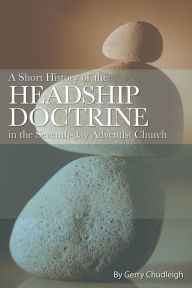A Short History of the Headship Doctrine in the Seventh-day Adventist Church
by Gerry Chudleigh
2020-08-08 11:57:02
A Short History of the Headship Doctrine in the Seventh-day Adventist Church
by Gerry Chudleigh
2020-08-08 11:57:02
The Seventh-day Adventist Church, which was organized in mid-19th century America and has grown to nearly 20 million members worldwide, has always emphasized personal relationships with God and the importance of following one’s own conscientiou...
Read more
The Seventh-day Adventist Church, which was organized in mid-19th century America and has grown to nearly 20 million members worldwide, has always emphasized personal relationships with God and the importance of following one’s own conscientious understanding of the Bible.This commitment to individual study and individual conviction has often placed church teachings and practices in tension with established churches and with the values of the wider culture. It has also resulted in Adventist members and leaders differing sharply from each other on a variety of topics, from the nature of Christ to the sequence of end time events.But on major beliefs there has been broad agreement among members. Christians who didn’t see the necessity of keeping the seventh-day Sabbath did not join a church that worshiped on Saturday, and people who didn’t believe in the soon and literal return, or “advent,” of Jesus did not join an adventist church.And there was another powerful filter. Many Christians in the 19th century, citing Paul’s counsels that women were to be silent in church and not teach men, did not become Seventh-day Adventists because the church accepted and valued the ministry of women in ways that were out of harmony with American culture and popular religion. This was especially evident in the preaching, teaching and general leadership role of Ellen White, co-founder of the church.But over time the church’s openness to women in leadership positions waned. After Ellen White died in 1915, she came to be viewed by many as unique among Adventist women, rather than as a role model. In the first half of the 20th century most women leaders and evangelists were replaced by men. Then, in the late 20th century, many conservative Adventists adopted a new male “headship principle” doctrine that was gaining a foothold among some evangelicals. This new headship principle would have prevented many earlier Adventists from joining the Seventh-day Adventist Church, but was now seen by its advocates as essential to the correct interpretation of scripture.This book provides a brief outline of who developed the headship principle among Calvinist churches, who imported it into the Seventh-day Adventist Church, and why it was quickly accepted by some Adventists.
Less











.jpg)













.jpeg)




